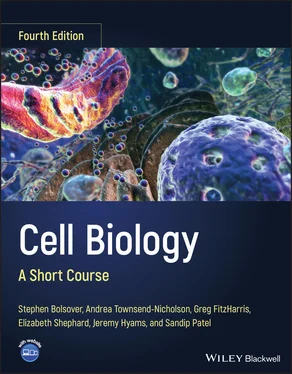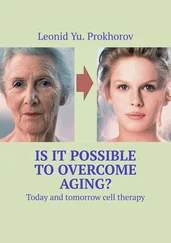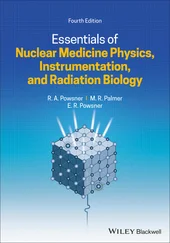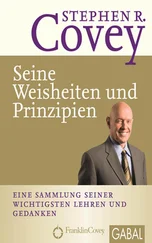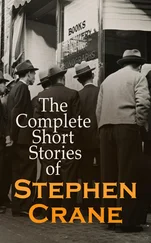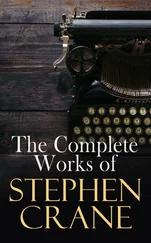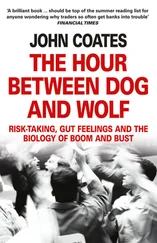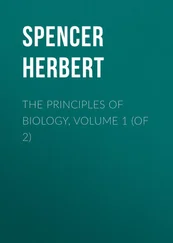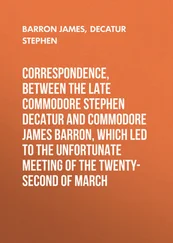Stephen R. Bolsover - Cell Biology
Здесь есть возможность читать онлайн «Stephen R. Bolsover - Cell Biology» — ознакомительный отрывок электронной книги совершенно бесплатно, а после прочтения отрывка купить полную версию. В некоторых случаях можно слушать аудио, скачать через торрент в формате fb2 и присутствует краткое содержание. Жанр: unrecognised, на английском языке. Описание произведения, (предисловие) а так же отзывы посетителей доступны на портале библиотеки ЛибКат.
- Название:Cell Biology
- Автор:
- Жанр:
- Год:неизвестен
- ISBN:нет данных
- Рейтинг книги:3 / 5. Голосов: 1
-
Избранное:Добавить в избранное
- Отзывы:
-
Ваша оценка:
- 60
- 1
- 2
- 3
- 4
- 5
Cell Biology: краткое содержание, описание и аннотация
Предлагаем к чтению аннотацию, описание, краткое содержание или предисловие (зависит от того, что написал сам автор книги «Cell Biology»). Если вы не нашли необходимую информацию о книге — напишите в комментариях, мы постараемся отыскать её.
Cell Biology: A Short Course
Cell Biology: A Short Course
Cell Biology: A Short Course
Cell Biology — читать онлайн ознакомительный отрывок
Ниже представлен текст книги, разбитый по страницам. Система сохранения места последней прочитанной страницы, позволяет с удобством читать онлайн бесплатно книгу «Cell Biology», без необходимости каждый раз заново искать на чём Вы остановились. Поставьте закладку, и сможете в любой момент перейти на страницу, на которой закончили чтение.
Интервал:
Закладка:
However, the modified strand 3′ AUTT 5′ will have the matching strand 5′ TAAA 3′ synthesized on it, since adenine base pairs with uracil. The daughter cell that inherits this chromosome, assuming that it is still infected with PBS2 and therefore allows the uracil to remain, will now have a chromosome with the structure

with each base pair now nicely hydrogen bonded to its partner. Only the presence of uracil in the DNA molecule betrays the fact that a deamination event has occurred.
When this cell replicates its DNA the strands will separate and each will act as a template for the synthesis of a new strand. The lower strand, 3′ AUTT 5′ will as before have the matching strand 5′ TAAA 3′ synthesized on it. The upper strand 5′ TAAA 3′ will generate a chromosome with the structure

and the daughter cell that inherits this, and all its daughters in turn, will have a mutation that can no longer be easily identified as arising from a deamination.
This answer neglects the fact that a bacterium infected by a bacteriophage will likely die without generating any daughters.
 BrainBox 4.1 Elizabeth Blackburn, Carol Greider, and Jack Szostak
BrainBox 4.1 Elizabeth Blackburn, Carol Greider, and Jack Szostak
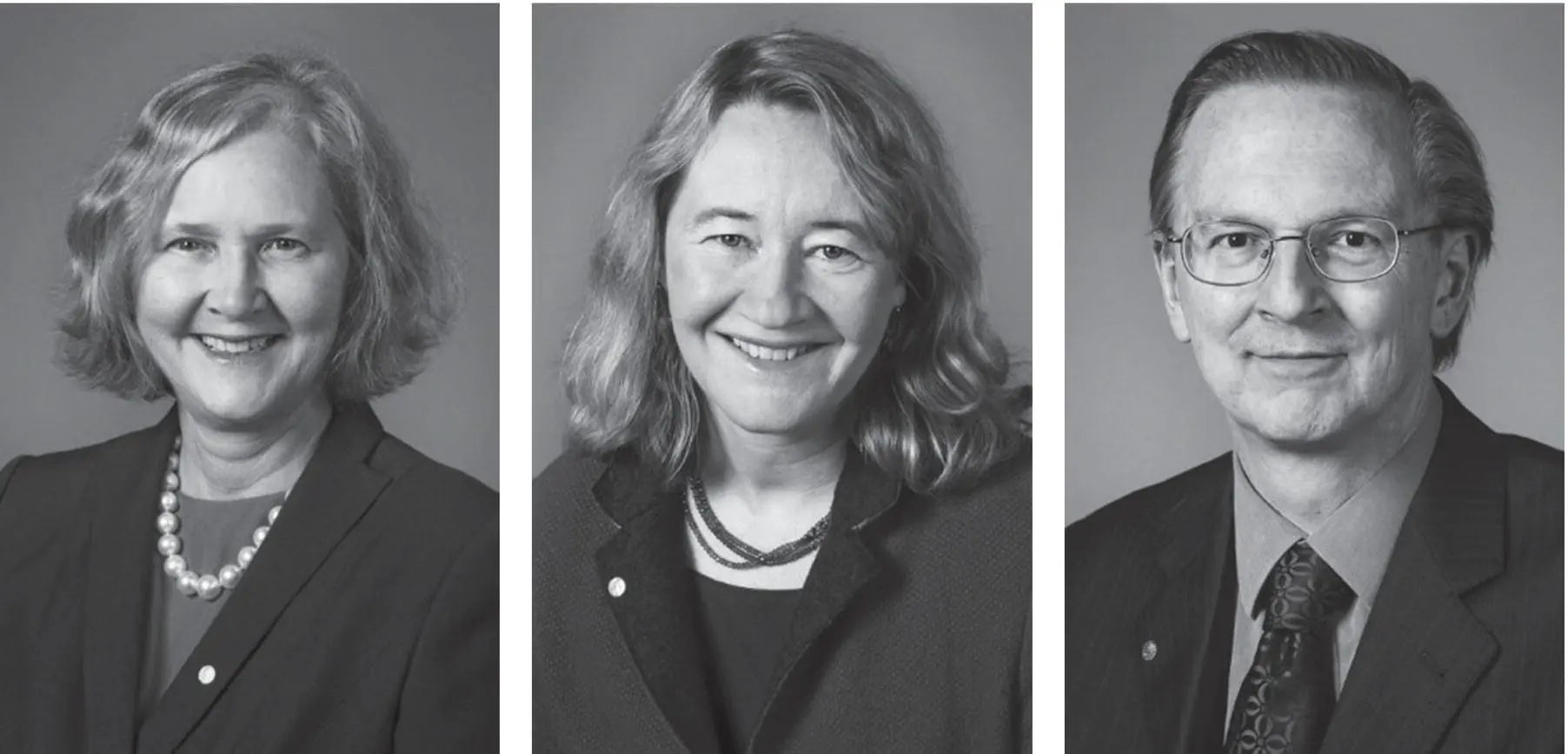
Elizabeth Blackburn, Carol Greider, and Jack Szostak.
Source: Nobel organization website.
Maintaining the information encoded within DNA is essential for the health of cells and organisms, and since the 1930s it had been speculated that the ends of chromosomes, called the telomeres, must be highly specialized to protect DNA strands from being degraded. In the late 1970s Elizabeth Blackburn, studying the model organism tetrahymena, discovered that the ends of chromosomes contain repeats of the sequence CCCCAA. Together with colleague Jack Szostak she also found that a minichromosome injected into cells would be rapidly degraded, unless this CCCCAA sequence was located at its ends – in which case the minichromosome was protected. Later, a PhD student named Carol Greider working in Blackburn's lab discovered the enzyme telomerase, which is responsible for depositing the CCCCAA repeats at chromosome ends. It is now understood that loss of telomeres contributes to the loss of cells' ability to divide and, conversely, that the unwanted ability of many cancer cells to over‐proliferate is linked to the overactivity of telomerase. Blackburn, Szostak, and Greider together won the Nobel Prize in Physiology and Medicine in 2009 for explaining “how chromosomes are protected by telomeres and the enzyme telomerase.”
SUMMARY
1 During replication each parent DNA strand acts as the template for the synthesis of a new daughter strand. The base sequence of the newly synthesized strand is complementary to that of the template strand.
2 Replication starts at specific sequences called origins of replication. The two strands untwist and form the replication fork. Helicase enzymes unwind the double helix, and single‐stranded DNA‐binding proteins keep it unwound during replication. In prokaryotes, DNA polymerase III synthesizes the leading strand continuously in the 5′ to 3′ direction. The lagging strand is made discontinuously in short pieces in the 5′ to 3′ direction. These are joined together by DNA ligase. DNA polymerase is a self‐correcting enzyme. It can remove an incorrect base using its 3′‐ to 5′‐exonuclease activity and then replace it with the correct base.
3 DNA repair enzymes can correct mutations. Uracil in DNA, resulting from the spontaneous deamination of cytosine, is removed by uracil – DNA glycosidase. The depyrimidinated sugar is cleaved from the sugar‐phosphate backbone by AP endonuclease, and DNA polymerase then inserts the correct nucleotide. The phosphodiester bond is reformed by DNA ligase.
4 In eukaryotes protein‐coding genes are split into exons and introns. Only exons code for protein. The human genome has a large amount of DNA whose function is not obvious. This includes much repetitious DNA, whose sequence is multiplied many times.
5 Protein‐coding genes may be found in repeated groups of slightly diverging structure called gene families, either close together or scattered over the genome. Some of the family members have lost the ability to operate – they are pseudogenes.
FURTHER READING
1 Brenner, S., Elgar, G., Sandford, R. et al. (1993). Characterization of the pufferfish (Fugu) genome as a compact model vertebrate genome. Nature 366: 265–268.
2 Chatterjee, N. and Walker, G.C. (2017). Mechanisms of DNA damage, repair, and mutagenesis. Environmental and Molecular Mutagenesis 58: 235–263.
3 O'Donnell, M., Langston, L., and Stillman, B. (2013). Principles and concepts of DNA replication in bacteria, archaea, and eukarya. Cold Spring Harbor Perspectives in Biology 5 (7): a010108.
4 Radman, M. and Wagner, R. (1988). The high fidelity of DNA duplication. Scientific American 259 (2): 40–46.
5 Venter, J.C. et al. (2001). The sequence of the human genome. Science 291: 1304–1351.
 REVIEW QUESTIONS
REVIEW QUESTIONS
1 4.1 Theme: Normal or damaging chemical change in DNAdepurinationdeaminationexcisionmethylationprimingthymine dimerFrom the list of processes on the left, select the one described in each of the statements below.a hydrolysis reaction creating a uracil base in a DNA strandaddition of a ‐CH3 group to adenine bases on a DNA strandhydrolysis of the bond between the deoxyribose moiety and a guanine basehydrolysis of the bond between the deoxyribose moiety and an adenine baseloss of the NH2 group on the 4th carbon of a cytosine basethe formation of a covalent bond between adjacent bases on a DNA strand
2 4.2 Theme: DNA replicationbreaking of base–base hydrogen bondsconnection of adjacent Okazaki fragmentsformation of an RNA sequence complimentary to the DNA chainhydrolysis and removal of a DNA strandincorporation of deoxyribonucleotide monomers into both the leading and lagging strandincorporation of deoxyribonucleotide monomers into the lagging strand but not into the leading strandin eukaryotes, removal of an RNA sequence complimentary to the DNA chainFrom the above list of processes, select the one performed by each of the enzymes below.DNA ligaseDNA polymerase IDNA polymerase IIIexonuclease Iexonuclease VIIhelicaseprimaseribonuclease H
3 4.3 Theme: Regions within eukaryotic chromosomesexongene familyintronlong interspersed nuclear elementpseudogenesatellite DNAtandemly repeated DNAFrom the above list of DNA regions within eukaryotic chromosomes, select the region described by each of the descriptions below.a section of DNA that, read in triplets of bases, encodes successive amino acids in a polypeptide chaina section of DNA with a sequence similar to a working gene but which no longer encodes a functional proteina section of DNA within a gene that is transcribed into RNA but which does not encode amino acids and which must be removed from the RNA before it leaves the nucleusa series of identical or almost identical genes all of which are transcribed so as to generate identical or almost identical RNA products and, in the case of protein coding genes, identical proteinsa type of DNA with a presumed structural role that makes up much of the chromosome in the centromere regionan extragenic DNA sequence that is repeated more than a million times
Читать дальшеИнтервал:
Закладка:
Похожие книги на «Cell Biology»
Представляем Вашему вниманию похожие книги на «Cell Biology» списком для выбора. Мы отобрали схожую по названию и смыслу литературу в надежде предоставить читателям больше вариантов отыскать новые, интересные, ещё непрочитанные произведения.
Обсуждение, отзывы о книге «Cell Biology» и просто собственные мнения читателей. Оставьте ваши комментарии, напишите, что Вы думаете о произведении, его смысле или главных героях. Укажите что конкретно понравилось, а что нет, и почему Вы так считаете.
